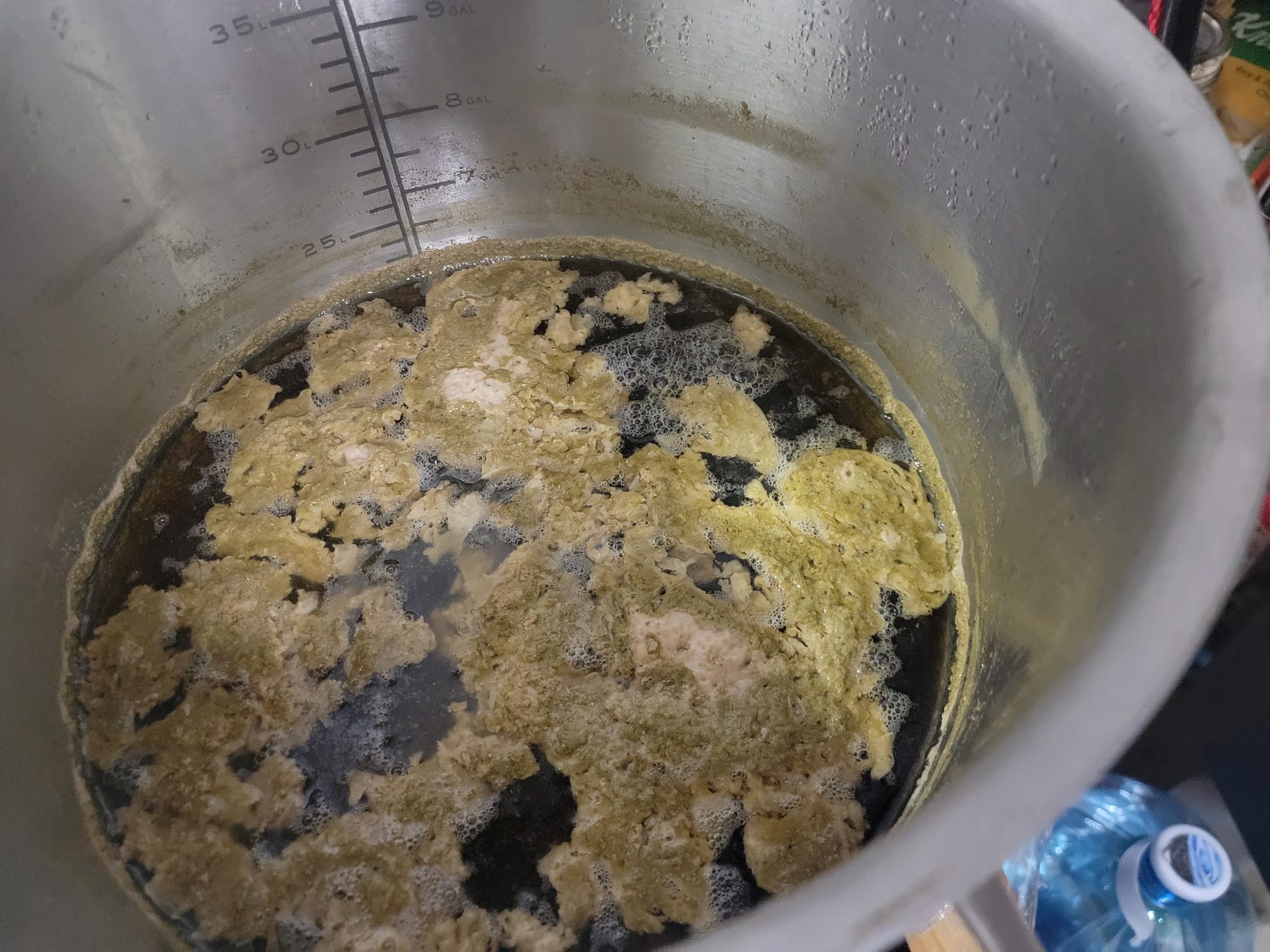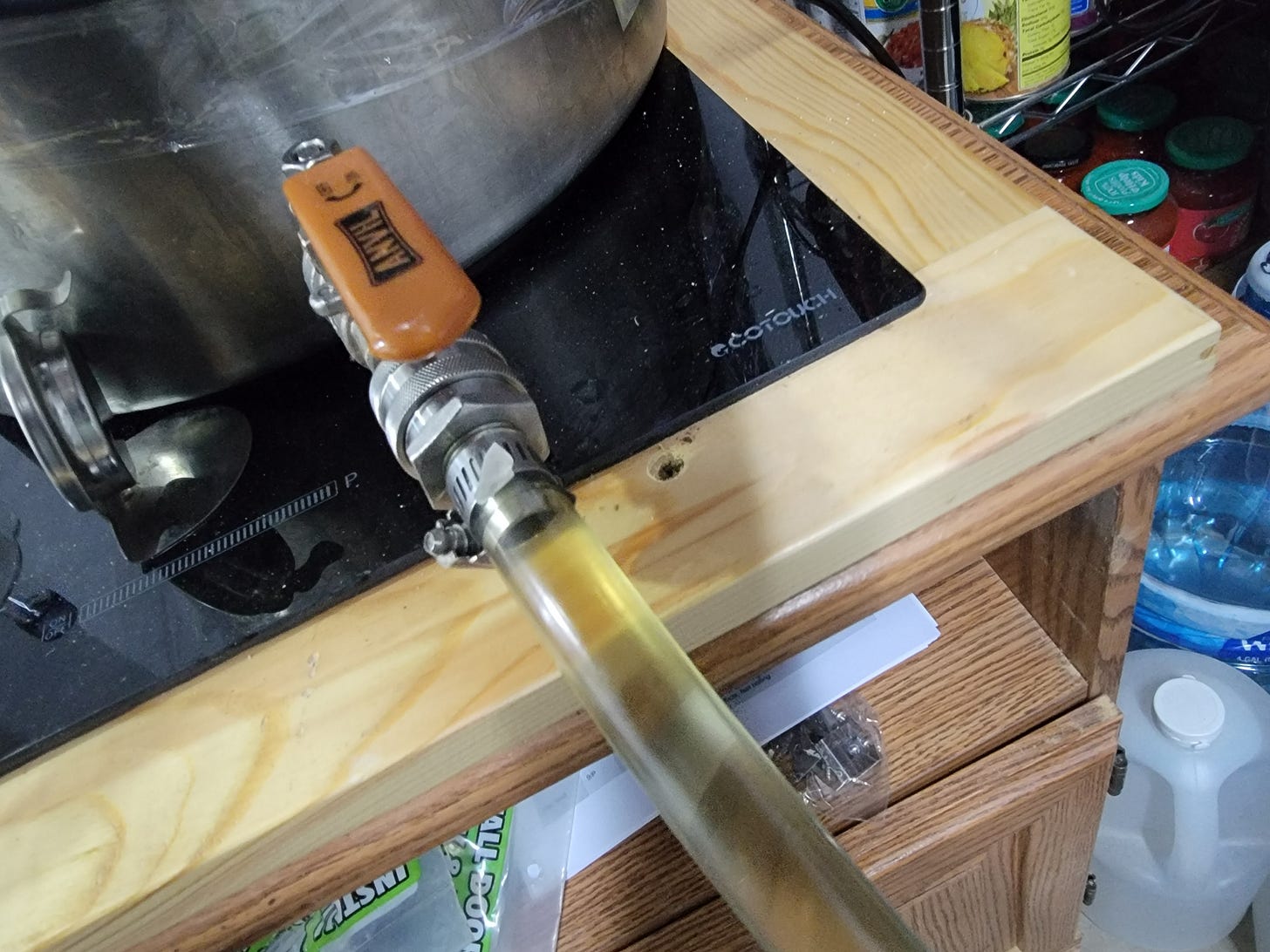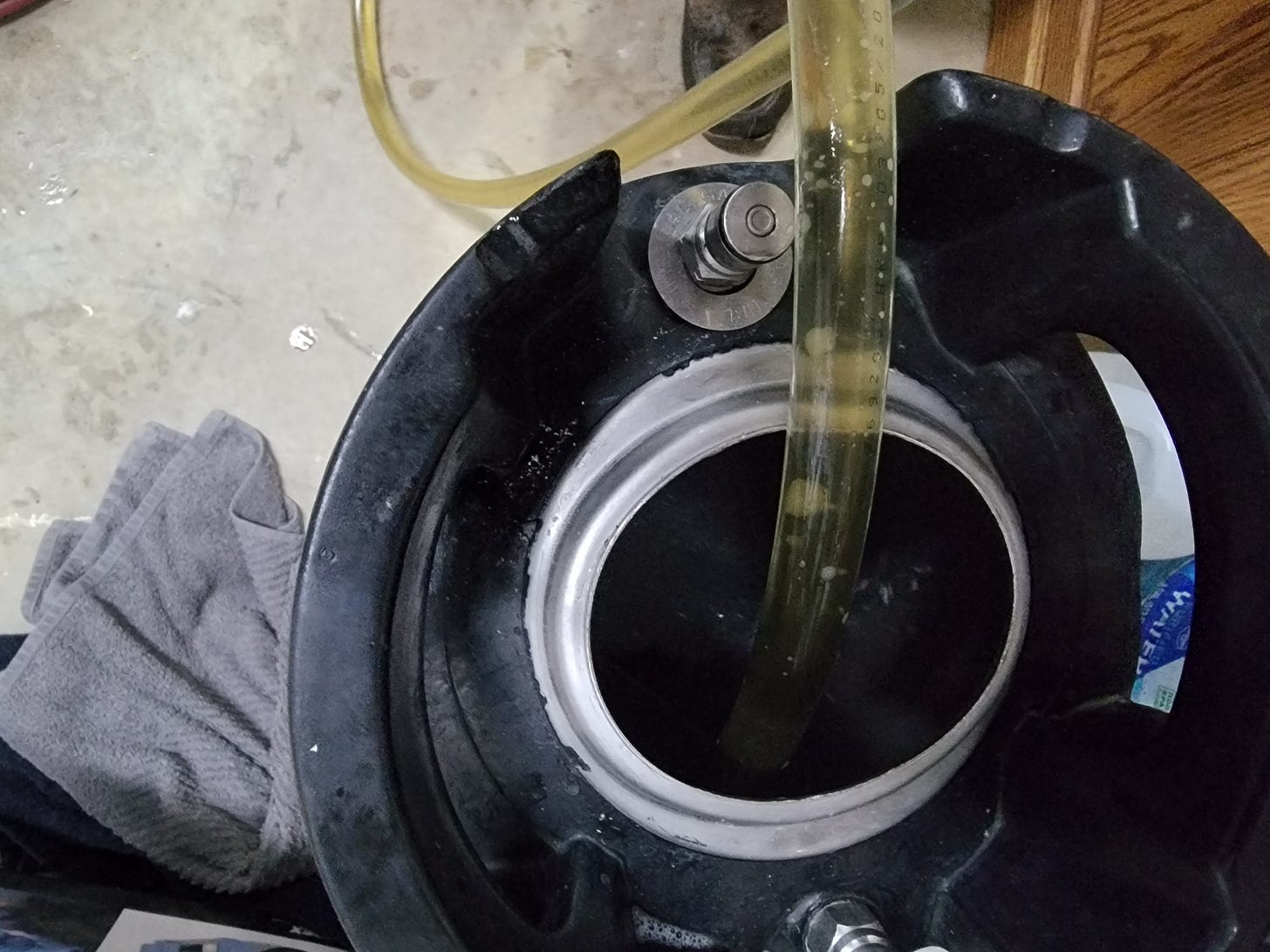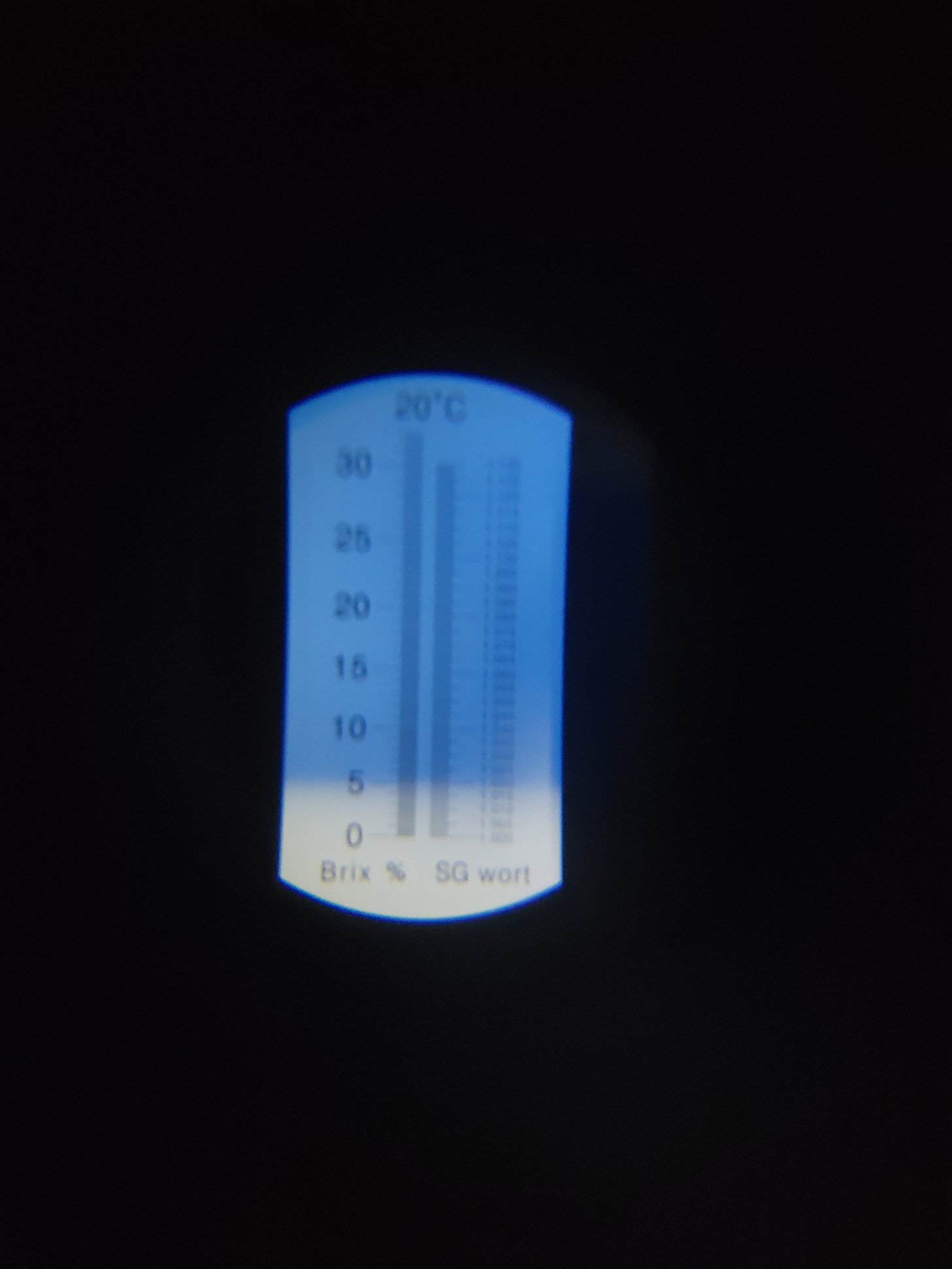Italian pilsner update
This is my keg day update.
This is upon opening the fermenter. Pretty normal. Some yeast and hops on top, most is settled on the bottom.
Filled Keg, the foam is from Star San wash just prior to kegging. Studies show a small amount of Star San is safe and does not affect beer flavor.
Drain hose with quick disconnect.
Into the keg it goes.
I use a brix refractometer to measure original gravity and final gravity. If you remember in my brew day post og was 1.045, so .05 off. Fg should have been 1.01to 1.007 You cannot see from the picture but it came in at 1.021, way high. this would be a 3.3 abv beer. Not a problem but it would be a sweeter beer.
While a brix meter reads wort correctly (original gravity) it does not necessarily read fermented (final gravity) correctly. Alcohol throws the readings off. For insurance use a hydrometer, pull a test amount of fermented wort and walla 1.00 right on target.
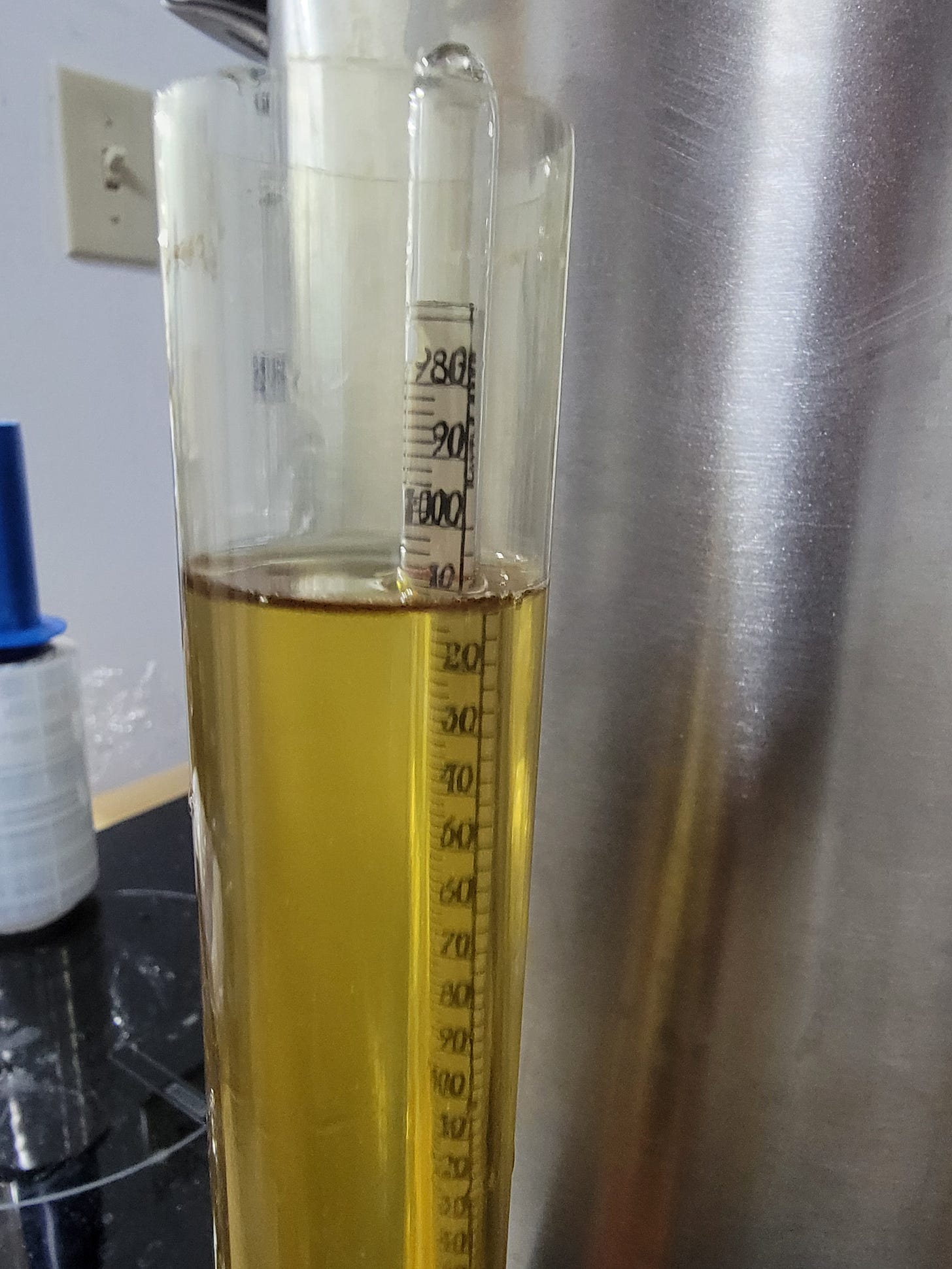
Next, I put keg in my kegerator, hook up co2 and purge the oxygen. This is done by pressuring and releasing the pressure from the pressure relief valve several times. Co2 is heavier than air so the air is at the top which is where the pressure relief valve is.
Now it's just a waiting game, the co2 needs a couple of weeks to carbonate the beer ( you can shake the keg and hurry the process along) and let it age.
Normal co2 range is 2.5 to 2.6 volumes.
In the United States, carbonation level is expressed in volumes of carbon dioxide. A volume of carbon dioxide is defined as the volume of gas that could be removed from a volume of beer at 68 °F (20 °C) at one atmosphere of pressure. For example, a liter of beer with 2.5 volumes would fill a 2.5-L bag with carbon dioxide if all the gas were removed at 68 °F (20 °C) and atmospheric pressure. This really is a weird unit of measure! Almost all other countries express carbon dioxide in grams per liter, a much more obvious expression of concentration. Per byo.com
Next update will be a review of the flavor, aroma and mouthfeel of the finished product.




